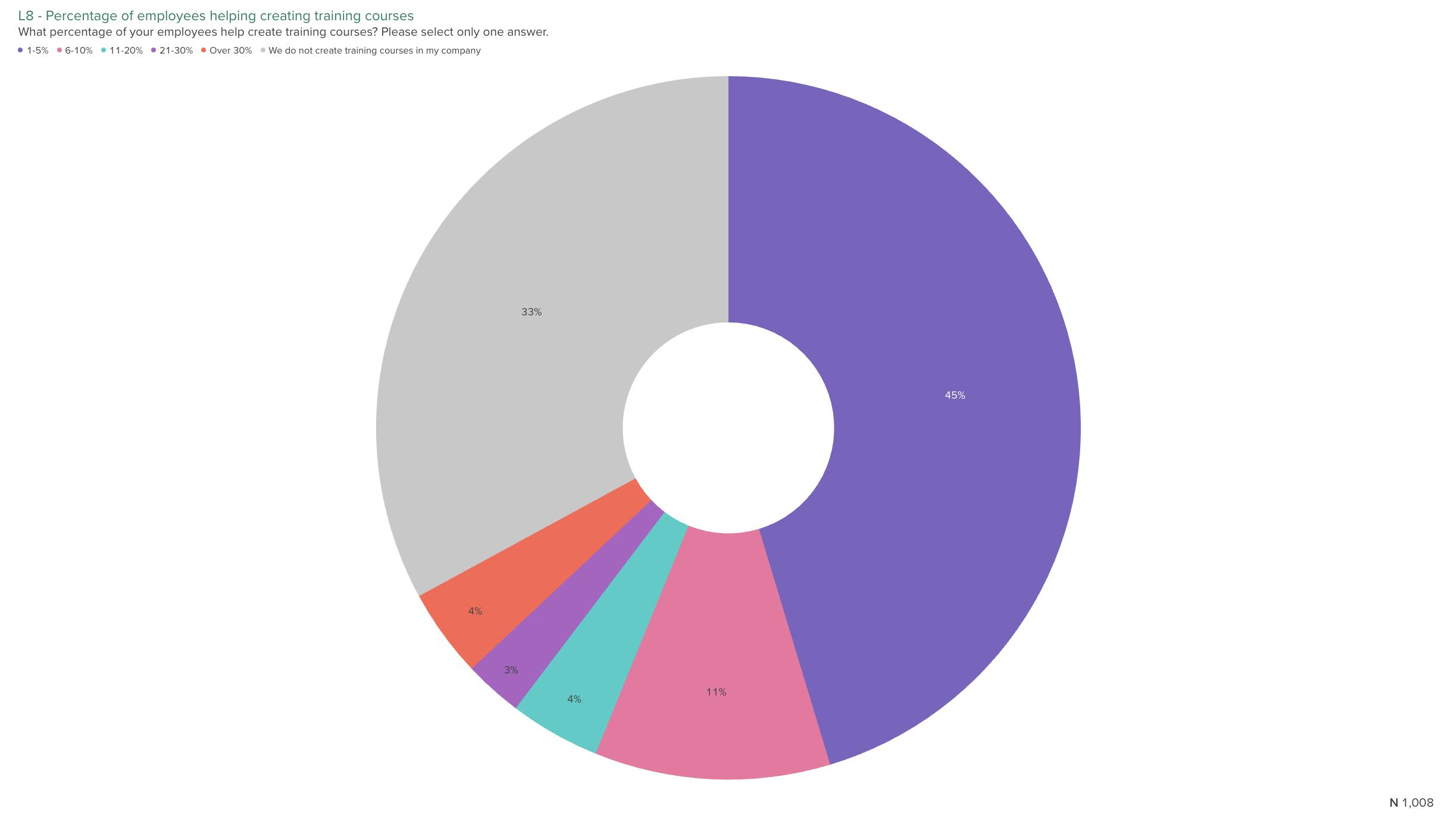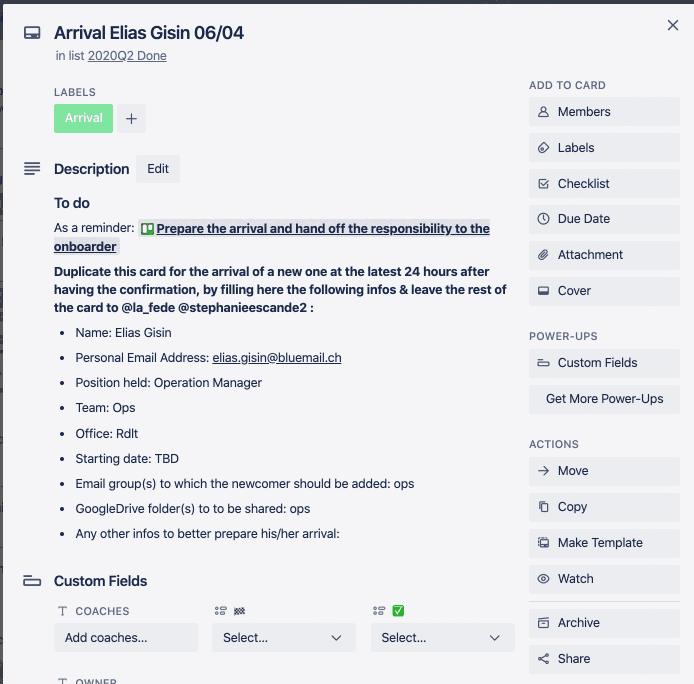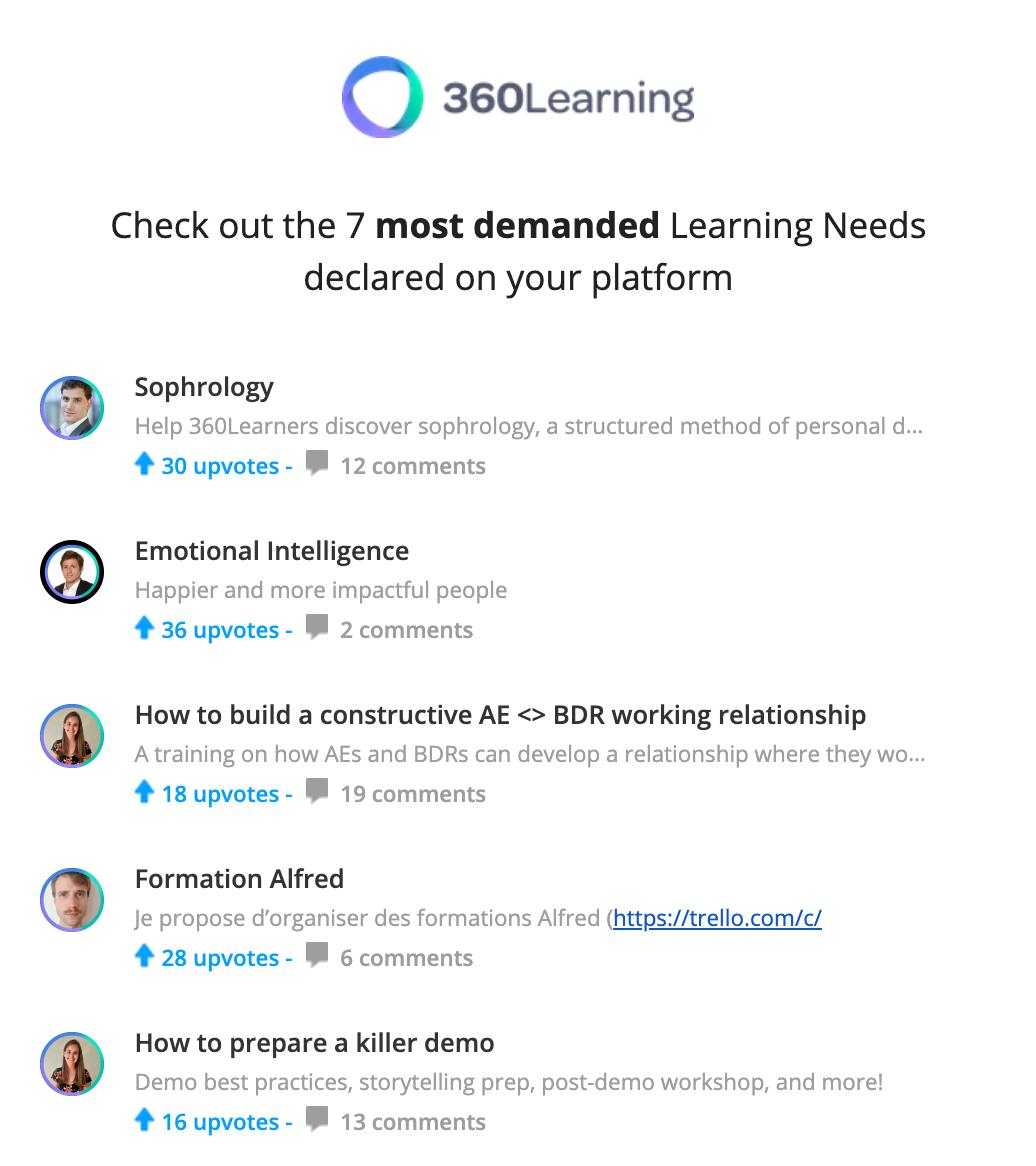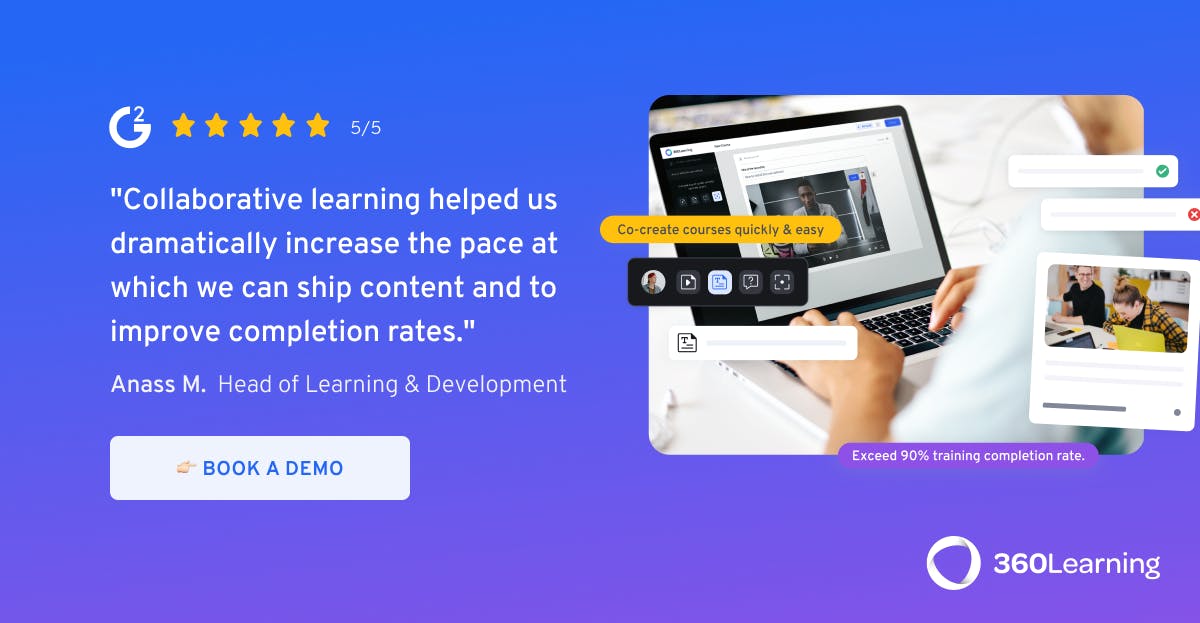
We Asked 1,000 UK L&D Leaders What Keeps Them Up At Night—Here's What They Told Us
Over the last year, every aspect of our personal and professional lives has been challenged.
On top of the pressures L&D Leaders are experiencing due to the disruption and uncertainty caused by the COVID-19 pandemic, many teams are also dealing with a lack of tools to onboard new hires remotely, and communication channels that don’t keep us connected. If this sounds familiar, know you’re not alone.
We wanted to find out more about how this uncertainty was affecting L&D Leaders, so we surveyed over 1,000 UK HR and Training and Development professionals. The results were stark: 49% of our survey respondents said L&D teams and budgets remained the same after COVID-19, with 15% having a reduced headcount and budget. With the requirement to do more with less, it’s no wonder so many L&D leaders are losing sleep.
In this article, we’ll delve into the 3 biggest L&D challenges facing UK businesses right now, and provide the tools, techniques, and resources you need to rest easy and cope with change.
Challenge #1: Moving training from in-person to online
The shift from in-person training to either full-time remote or hybrid work environments has been one of the biggest changes of the COVID-19 era. It’s no surprise that 33% of survey respondents found moving training from in-person to online was the single biggest challenge they faced right now.

33% of respondents have found moving training from in-person to online challenging after COVID-19.
So, why has the shift online been such a challenge for L&D leaders in the UK? Our survey results suggest two key reasons.
Reason #1: Creating courses takes too long
Our survey asked L&D teams the average time it takes them to create a course. Of those that use a learning platform, 10% said it took a week. However, 12% said it took over a month! This suggests many L&D leaders are struggling with course creation that is admin-heavy, resource-intensive, and doesn’t allow for continuous improvement.

The average time to create a course was a week, according to survey respondents.
Online training challenge #2: It’s difficult to engage subject-matter experts
The second big online training challenge is around leveraging all that great institutional knowledge your teams have.
A staggering 45% of UK businesses surveyed said only 1-5% of employees help create courses. This suggests many L&D teams work alone, meaning you’re solely responsible for creating the content. If you’re lucky, you may have instructional designers to help out. Either way, keeping up with learning demands is difficult–especially in a remote or hybrid context.

45% of UK businesses say 1-5% of employees help create courses
With these challenges clearly on the minds of so many UK L&D teams, a lot of people are looking for ways to deliver fast, simple online training that makes use of subject-matter expertise. Fortunately, we’ve got one great suggestion: empower your employees with decentralised learning.
Make the shift to decentralised learning
Establishing a learning culture that empowers employees doesn’t happen overnight, and it’s even harder to implement during moments of crisis. A centralised, top-down management culture can contribute to employees feeling unappreciated, and also has a negative effect on workplace trust, engagement and motivation.
This is why it’s so important to implement a decentralised culture where employees are empowered to define their own Learning Needs and create courses themselves. In addition, this type of culture is agile enough to scale while supporting shifting business priorities.
At 360Learning, we’re leading the Collaborative Learning movement to encourage employees to share their knowledge and expertise and create a more democratic and distributed learning process. Our approach encourages learners to take control of their own learning goals and as a result, we are able to embrace a true learning organisation culture.
We’ve helped clients like Mitsubishi Electric, Cinos, Gardline and Urbanbubble embrace this decentralised learning culture by making online learning simpler and faster:
- Decrease course creation time. The less time it takes to ship courses, the more resources you save, and the more time you have to spend on the things that really matter. You can cut the average course creation time to just 17 minutes with a Collaborative Learning platform.
- Encourage peer-to-peer learning. As the science shows, peer-to-peer learning is a more effective way to create lasting training outcomes, leading to greater engagement, higher course completion rates, and increased motivation to learn.
Are low engagement rates keeping you up at night? Check out our ebook to find out how to put science to work for better learning!
In addition to the shift online, our survey results tell us UK L&D leaders are worried about one particular aspect of hybrid work: remote onboarding.
Challenge #2: Onboarding new hires from a distance
According to respondents, 21% of businesses found onboarding new hires in a remote environment challenging. Without the office tour, face-to-face introductions, and in-person training, many L&D teams have found it difficult to introduce the company culture and make new employees feel welcome.
The key to overcoming these challenges? Create a flexible and nimble remote onboarding process. You need an onboarding setup that can weather a storm and adjust to any disruption or changes in the way you work.
Here are two tips to help you future-proof your onboarding process and make the experience as smooth as possible for new hires.
Remote onboarding tip #1: Don’t forget pre-boarding
You’ve just given a candidate a job offer and they’ve happily accepted. This is a time of excitement. However, as the first day approaches, nerves can start to kick in. To ease new hires and keep them engaged, it’s paramount you stay in touch and prepare for their arrival.
A major part of pre-boarding is giving access to your tools to new employees. It sounds simple, but it’s the most common problem to have leading up to day one. There’s nothing worse than making new people feel like they’ve been forgotten about, which is why it’s important to consider all the logistics prior to arrival to keep new hires happy and enthusiastic.
Here’s an idea of how we approach pre-boarding at 360Learning:

As you can see, we use checklists in Trello to ensure nothing included in pre-boarding is missed. Many of these tasks involve multiple people, so we use comments to ping owners and receive updates on task completion.
In addition to pre-boarding, the transition to onboarding must be seamless. You can achieve this by creating personalised content for each new hire.
Remote onboarding tip #2: Develop personalised content for every employee
Whilst some onboarding components are the same for every new hire, to really prepare onboarders for their new job, you need to provide tailored Learning Paths with the information and support new hires need to become fully operational.
You can use a balance of standardised and personalised training content for each new learner. Standardised content may include topics such as culture and wider business objectives. Personalised content will relate specifically to their role and will include things like training on tools they will use and colleagues and departments they will collaborate with.
Remember, new learners need time to take in new information and progress at their own pace. Giving them that flexibility is vital, especially when working remotely. It shows you care and helps keep them engaged during their onboarding.
And now, the third major challenge keeping UK L&D teams up at night: learner engagement and completion rates.
Related: 6 Steps to a Great Remote Onboarding Process - and What to Avoid
Challenge #3: Boosting learner engagement and completion rates
Right now, the average learning course completion rates hover at around 20-30% across the industry. This trend came through in our data, with 19% of our survey respondents finding boosting learner engagement and completion rates challenging, and 18% finding it difficult to understand learner needs.
So, why are so many L&D teams finding it hard to engage learners? We think there are two big factors:
- Course content becomes outdated quickly. The world changes quickly, and learning content needs to keep up. The problem is, most L&D teams don’t have the time or budget to keep this content fresh. The result? Disengaged learners.
- It takes too long to create courses. A lot of L&D teams work alone, creating content without input from subject-matter experts. This isn’t just a missed opportunity to showcase your great internal knowledge–it also slows down course creation, meaning you have to rely on old or outdated content.
To address these two factors, we give learners the opportunity to contribute and voice Learning Needs. Here are some ways to engage learners and increase completion rates with Collaborative Learning.
19% of our survey respondents found boosting learner engagement and completion rates challenging, and 18% found it difficult to understand learner needs.
Boost engagement and completion rates with Collaborative Learning
First and foremost, focus on shipping training your teams actually want. A Collaborative Learning platform helps ensure relevant and engaging courses by asking learners to declare different types of Learning Needs:

This is a great way to prioritise course creation based on which topics come out on top. By creating courses in this way, you can naturally boost engagement and completion rates by shaping learning content to match the needs identified by employees in their day-to-day work.
You can help get your learners to the finish line by following these two Collaborative Learning principles:
- Use peer feedback everywhere. Promoting collaboration and peer feedback helps learners retain information. By embedding discussion forums in your courses, learners can highlight outdated or inaccurate information, allowing you to fix it quickly.
- Engage subject-matter experts. Allow learners to ask specific questions of subject-matter experts directly in courses. This saves you time connecting learners with the right experts, and makes it easy to oversee how your learning material is improving over time.
Incorporate these two techniques, and you can boost learner engagement and completion rates–no matter what else might be happening in the world.
Related: Discussion Forum: Boost Completion Rates from 20% to 90% With Collaborative Learning
Get a good night’s sleep with our L&D tips and resources
All around the world, L&D Leaders are dealing with changing demands for organisational learning— and the UK is no exception. We’re managing more complex demands, and a greater need to build skills in new areas. It’s no wonder UK L&D Leaders are feeling under pressure right now.
In this article, we’ve provided a range of tips and resources you need to deliver training experiences that meet the current times, including:
- Making the shift to decentralised learning and overcoming the challenges of online training
- Using great pre-boarding and tailored onboarding to welcome new hires from a distance
- Boosting learner engagement and course completion rates with Collaborative Learning
We hope you’ve found some inspiration here to help you meet the L&D challenges of the current moment. If you’d like to find out more about how Collaborative Learning can help you and your teams thrive in uncertain times, don’t hesitate to get in touch with one of our experts!
Data from this article was taken from a 2021 survey conducted by 360Learning of 1,008 UK decision-makers involved in HR and Training and Development in businesses with over 100 employees.



